Benefits of Custom Booklet Printing with No Minimum Pages


The advantage of printing at Ex Why Zed is the complete freedom given to choose a Custom booklet size without restriction on a number of set sizes or formats. Find the best solution for your content, not what your printer dictates to you. At Ex Why Zed we can print stapled booklets from A6 to A3 portrait. If you can looking for a square size then there is a wide range from 105×105 right up to an impressive 297x297mm. For landscape custom booklets, A5 landscape to A4 landscape are the parameters.
Pick any custom size within these dimensions.
To illustrate the massive range we offer, here is a A6 booklet alongside a massive 380x289mm portrait example. Lots of scope, lots of surface area to potentially fill with your best artwork.
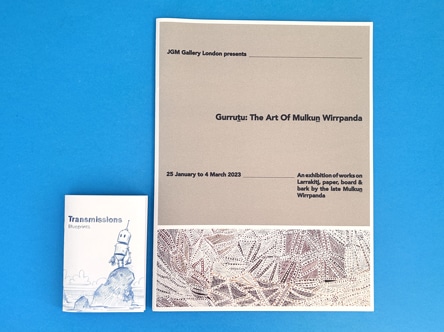
A good process is to consider whether your work would look best on a portrait, landscape or square format then choose the size next.
In addition to size options, we also offer a variety of page options, paper stocks, cover options, laminations, and quantity options for both perfect bound and saddle-stitched booklets. This allows you to customize your booklet or brochure to your exact specifications and create a professional finish that perfectly aligns with your marketing strategy.
So, whether you need custom size booklets, perfect bound booklets, saddle-stitched booklets, or any other specifications, trust Ex Why Zed to deliver the perfect option for your custom booklet printing project. With our powerful tools, dedication to customer service, and faster turnaround times, you can expect the best results every time.
What kind of booklet are you looking for?
Are you searching for the perfect booklet to showcase your brand, products, or services? Look no further! At our custom booklet printing services, we offer a wide range of options to create the ideal booklet for your needs. Whether you are looking for a compact square size or a larger landscape format, we have the dimensions to suit your preferences. And it doesn’t stop there – we also provide a variety of page options, paper stocks, cover options, laminations, and quantity options for both perfect bound and saddle-stitched booklets. With our customizable features, you can create a stunning and professional finish that aligns perfectly with your marketing strategy. So, whatever type of booklet you are looking for, we have the tools and expertise to bring your vision to life.
How Are Custom Booklets Made?
Booklets are made using a meticulous production process that involves the latest technology and skilled craftsmanship. At our production facility in South Yorkshire, we utilise state-of-the-art equipment to ensure high-quality results for our customers.
There are different types of booklets available, each with its own unique features. Stapled booklets are a popular choice and are created by folding multiple sheets of paper in half and using staples to secure them together. Bound booklets, on the other hand, are created by cutting and folding a larger sheet of paper and then binding the pages together. This method provides a sleek and professional finish.
Loop stitched brochures offer a more creative and eye-catching option. They are made by placing wire loops through the spine of the booklet, allowing for easy flipping and a dynamic presentation. For a more sophisticated look, hardcover books are an excellent choice. They are made by binding a cover to the booklet using a strong adhesive and rounded corners.
Booklets are a versatile format that can be used for a variety of purposes. They are ideal for product catalogs, event programs, and even comic books or recipe books. Their compact size allows for easy distribution, making them a powerful tool for marketing and promotional purposes.
With our cutting-edge technology and skilled team, we are able to produce booklets of various sizes and paper types to meet the unique needs of our customers. Whether you require a small booklet or a larger one, we have the capabilities to deliver high-quality custom booklets with a professional finish.
Trust our expertise in booklet production to bring your vision to life. Contact us today to get started on your custom booklet printing project.
What’s The Difference Between the Binding Options?
When it comes to custom booklet printing, there are various binding options available, each with its own unique features and advantages. Understanding the different binding options can help you choose the best one that suits your specific needs. Stapled booklets, which are created by folding and securing multiple sheets of paper with staples, offer a simple and cost-effective option. Bound booklets, on the other hand, provide a sleek and professional finish by cutting, folding, and binding larger sheets of paper together. Loop stitched brochures offer a more creative and eye-catching option, with wire loops through the spine for easy flipping. For a more sophisticated look, hardcover books are an excellent choice with a strong adhesive and rounded corners. Each binding option has its own charm and functionality, allowing you to create custom booklets that make a lasting impression on your target audience.
Saddle Stitched
Saddle Stitched Booklets: The Perfect Solution for Fast Turnaround Custom Printing Projects
Saddle Stitched booklets, also known as stapled or wire-stitched booklets, are the ideal choice for short-run projects that require quick turnaround times. This versatile binding method is widely used for printing annual reports, magazines, brochures, and other booklets.
Saddle Stitched booklets offer a range of size options, making them a popular choice for custom projects. Whether you need a small booklet for a promotional tool or a larger one for a product catalog, saddle stitching can accommodate your specific requirements.
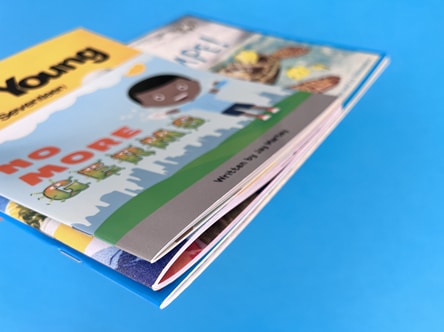
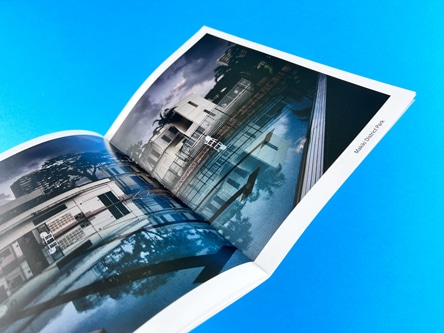
The saddle stitching process involves binding pages together using staples along the spine. This secure binding method ensures that the pages remain intact and easily readable. It also allows for easy flipping and maneuvering of the booklet, making it a user-friendly option for readers.
There are several benefits to choosing saddle stitched booklets. Firstly, you have the freedom to mix and match cover and inside pages, creating a booklet that perfectly reflects your brand and message. Additionally, saddle stitching offers faster turnaround times for delivery, which is especially advantageous when you have an upcoming event or deadline to meet.
When it comes to custom booklet printing projects, saddle stitched booklets provide a sleek and professional finish that will impress your target audience. With their affordable pricing, quick production turnaround times and powerful marketing impact, they should be an integral part of your marketing strategy.
In conclusion, saddle stitched booklets offer the perfect solution for your custom printing needs. Their fast turnaround times, custom size options, and professional finish make them the go-to choice for printing annual reports, magazines, brochures, and other booklets. Trust in the expertise of a reliable booklet printing service to bring your vision to life and create a powerful promotional tool that will leave a lasting impression on your potential customers.
Perfect Bound Booklets
Perfect Bound Booklets, also known as glue-bound booklets, are an excellent option when you need a durable and professional-looking booklet that can accommodate higher page counts.
The perfect binding process involves applying a strong adhesive to the spine of the booklet, securely bonding the pages together. This creates a sleek, seamless look that gives your booklet a polished and professional finish.
One of the main advantages of perfect bound booklets is their durability. The glue used in the binding process ensures that the pages stay intact even with frequent use, making them perfect for showcasing designs in a portfolio or for businesses looking to feature their products or writing.
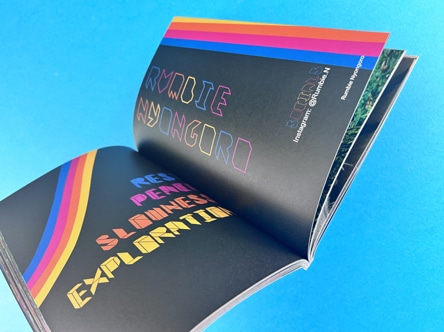
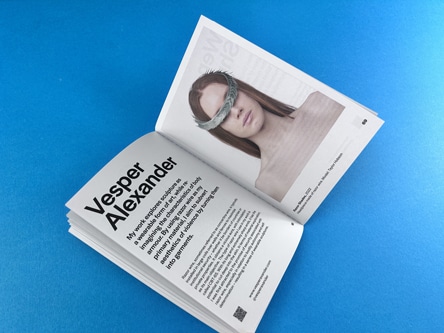
Unlike saddle-stitched booklets, perfect bound booklets can accommodate higher page counts, ranging from 36 pages to over 200 pages. This makes them a great choice when you need to include a substantial amount of content in your booklet. We will be honest, they won’t layflat. The pages always have a tendency to bounce closed again. Like everything at Ex Why Zed though, we will be honest and make this clear before you go ahead.
Whether you are a creative professional showcasing your work or a business looking to make a statement, perfect bound booklets provide a sleek and professional showcase for your designs or products. With their ability to accommodate higher page counts and their durable binding, perfect bound booklets are a perfect option for any project or purpose.
What are the different types of custom booklets?
Booklets are incredibly versatile and can serve a wide range of purposes in both personal and professional settings. From showcasing products to providing event information, there are countless types of booklets that can be created through custom booklet printing. Some common types include product catalogs, which allow companies to present their range of offerings with descriptions and images. Event programs provide attendees with schedules and details about weddings, conferences, concerts, and more. Instruction manuals accompany products to provide setup and usage instructions. Company portfolios showcase achievements, case studies, and services to potential clients. Magazines cover various topics, from fashion to news to hobbies. Educational workbooks are used in schools for exercises and assignments. Travel guides offer information about tourist attractions, maps, and travel tips. Recipe books collect recipes with pictures and instructions. Theatre programs give audiences information about plays or performances. Religious texts, hymnals, and prayer books are often printed in booklet format. Annual reports summarise a company’s financial and operational performance. Membership directories list member details and contact information. Short story or poetry collections are compact forms of publishing. Booklets can also be used for promotional material, training manuals, children’s activity books, research journals, newsletters, real estate listings, and zines. With the ability to tailor size, page count, and design, custom booklet printing offers a versatile and effective format for a variety of purposes.

Ready to order?
Ready to order? Placing an order for custom booklets is a simple and straightforward process that can be completed in just three easy steps.
Simple, easy ordering process with us on hand to help
Brilliant, you’ll need to upload the files using WeTransfer (it’s super easy, you don’t need an account and it is free). In the comments box, do remind us of the print spec you are going for, the number of copies and the best address for us to deliver to. We will then give your artwork a free preflight check to highlight any potential issues and will email any recommendations before going to production.
Approve your proof and finalise the order
After your artwork is received and reviewed, our team will prepare a digital proof for you to review. This proof will showcase how your booklet will look once printed. Take the time to carefully review all the details, including layout, fonts, colours, and images. If you are satisfied with the proof, simply respond to the email or click the Approve button if we send you over an auto proof. Once approved, we will proceed with production, and your custom booklets will be on their way to you.
Placing an order for custom booklets has never been easier. Follow these three steps, and soon you will have professionally printed booklets in your hands, ready to make a lasting impression. All we need to go ahead is a PDF file which you can export from most computer programs in 2023.
Why do companies use booklets as their marketing media?
Booklets serve as an effective marketing media for companies due to their versatility and ability to deliver information in a visually appealing and organised manner. Companies use booklets to showcase their products or services, provide detailed information about their offerings, and highlight their brand identity. Booklets are often used for product catalogs, event programs, and business brochures, allowing companies to reach their target audience with a comprehensive and engaging marketing tool. Moreover, booklets can be customised to match the company’s branding and design preferences, making them a powerful tool to reinforce a company’s image and message. From sleek finishes to laminated covers, booklets offer a professional and high-quality presentation that customers can hold in their hands. With the option to choose different paper sizes, types of paper, and binding styles, companies have the flexibility to create custom booklets that meet their specific needs. Overall, booklets provide a tangible and visually appealing marketing strategy that effectively communicates a company’s message and captures the attention of potential customers.
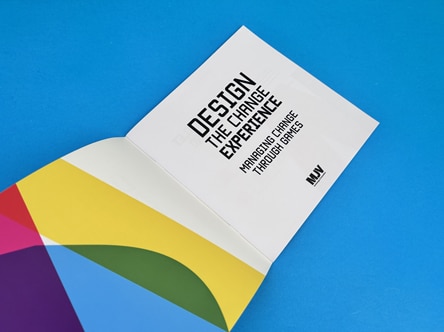
Importance Of Brochure Printing As Marketing Tool
Brochure printing is an essential marketing tool that can significantly impact brand awareness and help businesses capture the attention of potential clients. Not only is it a cost-effective solution compared to other print media, but its versatility allows for the promotion of various products and services.
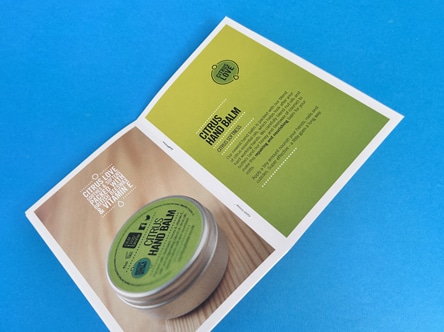
Brochures serve as powerful tools in showcasing a company’s offerings, providing information, and creating a lasting impression. They are easily distributable at events, trade shows, or within the community, reaching a wide target audience. This tangible form of marketing can be taken home or shared with others, ensuring a longer-lasting impact.
To make the most of brochure printing, attention to detail is crucial. Design elements, content, images, paper quality, and ink used should all align with the brand and message being conveyed. A sleek finish, rounded corners, or laminated covers can bring a professional touch and enhance the brochure’s appeal.
When considering custom booklet printing projects, pay attention to size options and paperweights that suit the purpose, whether it’s a small flyer or a larger booklet. With modern printing techniques and a customer service team, businesses can ensure a faster turnaround and perfect packaging. Additionally, saddle stitching ensures the full width of the page is visible ad allows plenty of space to showcase products or services effectively.
In conclusion, brochure printing plays a crucial role in any marketing strategy. It not only offers a cost-effective and versatile way to promote products and services but also provides a tangible and professional finish to leave a lasting impression on potential customers. By paying attention to design, content, and overall quality, businesses can effectively leverage brochure printing as a promotional tool.
Delivery Information
We understand that timely delivery is vital for your custom booklet printing projects. Our delivery process is efficient and streamlined, ensuring that your booklets and brochures reach you on time and in perfect condition.
Our standard turnaround time for delivery is 3/4 days, starting from the final approval of your artwork. This allows us to print, bind, and package your booklets or brochures with care. If you require your order sooner, we also offer an expedited delivery option. With our next day delivery courier service, you can have your printed materials in your hands faster, allowing you to meet tight deadlines. Longer print runs over 700 copies or more, which we generally litho print do take a little longer – best to allow 6-8 working days depending on the print spec.
While we prioritise speed, we also strive to keep the cost of delivery affordable for our customers. Our partnership with a reliable next day delivery courier allows us to offer low-cost delivery options per order. This ensures that you can get your booklets and brochures delivered promptly without breaking the bank.
Custom Size Booklets & Brochures FAQs
When it comes to custom booklet printing, there are often questions and concerns that arise. At [Company Name], we understand the importance of providing clear and helpful information to our customers. In this section, we address some frequently asked questions regarding custom size booklets and brochures. Whether you’re wondering about paper sizes, artwork specifications, or delivery options, we’ve got you covered. Read on to find answers to your queries and feel confident in choosing [Company Name] for your custom size booklet and brochure printing needs.
Q. How much does it cost to print a booklet?
When it comes to booklet printing, the cost can vary depending on several factors. Understanding these cost factors can help you plan and budget effectively for your custom booklet printing projects. Here are some key considerations that influence the cost of printing booklets:
1. Quantities: The higher the quantity of booklets you need, the lower the unit cost per booklet tends to be. Consider printing a larger volume to get the best value for your money.
2. Materials: The type of paper you choose can impact the cost. Thicker or higher-quality paper tends to be more expensive than lighter weight options. Consider the purpose of your booklets and choose a paper weight that fits your needs without going overboard.
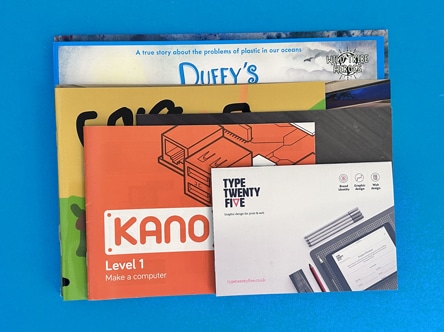
3. Sizes: The size of your booklet can affect pricing, especially if it deviates from common sizes. Opting for standard sizes can be a cost-effective choice.
4. Accessories: Additional features such as lamination, rounded corners, or special finishes may enhance the look and feel of your booklets but are extra cost factors to consider. Evaluate whether these accessories are necessary for your project or if you can do without them to save costs.
To save on booklet printing costs, keep these tips in mind: consider printing in black and white instead of color, choose lighter weight paper, decide if lamination is necessary, and opt for longer production times. By weighing these factors and making informed decisions, you can get cost-effective yet high-quality booklets for your projects.
Q. How do I make a brochure or catalogue stand out?
When creating a brochure, it’s essential to make it stand out among the sea of promotional materials. One of the key factors in achieving this is by creating engaging and informative content. Start by using descriptive titles that capture the essence of each section. This allows readers to quickly understand what information they can expect from the brochure.
Remember to avoid technical jargon that may confuse your target audience. Instead, use clear and concise language that everyone can understand. Your goal is to communicate your message effectively.
Incorporate a strong call to action that urges readers to take the desired next step, whether it be visiting your website, making a purchase, or contacting your business. This encourages engagement and helps guide readers in their decision-making process.
Visuals are another crucial element that can make your brochure visually appealing and memorable. Include high-quality images and graphics that reflect your brand and enhance the overall design.
Before finalizing your brochure for printing, offer a proof to ensure everything looks just right. This allows you to make any necessary revisions and avoid costly mistakes.
By following these tips and incorporating engaging content, descriptive titles, a clear call to action, visuals, and offering a proof, your brochure will stand out and effectively convey your message to your target audience.
Q. What Does ‘pp’ Mean?
When it comes to booklets and brochures, you may have come across the abbreviation ‘pp’ and wondered what it means. In this context, ‘pp’ stands for ‘printed pages.’ It represents the number of sides of paper that will be printed in the booklet.
To understand this further, let’s delve into the relationship between ‘pp’ and the physical pieces of paper in the booklet. Typically, the number of printed pages is usually half of the total number of physical pieces of paper in the booklet.
For instance, if you have a booklet with 16 physical pieces of paper, it would have 32 printed pages, as each physical piece of paper contains two sides for printing. This is important to keep in mind when creating your booklet artwork or considering the length and content of your booklet.
So, whenever you see ‘pp’ mentioned in the context of booklet printing, remember that it is referring to the number of printed pages in the booklet and represents half of the total number of physical pieces of paper.
Now that you understand the meaning of ‘pp,’ you can confidently navigate the technical aspects of booklet printing and ensure that your designs and content align with your printing requirements.
Q. Why Do Booklet Pages Go Up in Fours?
Booklet pages go up in fours due to the folding and binding process. This is an important aspect to consider when planning your custom booklet printing projects. The reason behind this lies in the way booklets are constructed.
When creating a booklet, the page counts for printing are in multiples of four. This is because booklets are made by folding and binding sheets of paper together. Through this process, each sheet of paper creates four physical pages in the finished booklet.
The front page, two middle pages, and back page are all created through folding. When the booklet is printed, each physical page contains two sides for printing, resulting in a total of four printed pages per sheet.
Understanding this concept is crucial when designing your booklet. It helps you ensure that your content aligns with the page counts and layout, and that important information is strategically placed. So, when planning your booklet, remember that the page counts for printing are in multiples of four, thanks to the folding and binding process that creates the front page, middle pages, and back page.
By keeping this in mind, you can have a smooth printing process and achieve the desired outcome for your custom booklet.
Q. What image quality or resolution do you recommend?
When it comes to custom booklet printing, ensuring high-quality images is essential to create visually appealing and professional-looking booklets. To achieve the best results, it is recommended to use images with a resolution of at least 300 dpi (dots per inch) or above.
A higher resolution means more pixels are packed into each inch of the image, resulting in sharper and more detailed prints. This is especially important for images with fine details or small text that may become blurry or pixelated if the resolution is too low.
Another crucial consideration is the color mode. For accurate color representation in your booklet, it is recommended to use the CMYK color mode (cyan, magenta, yellow, and black). CMYK is the standard color model used in professional printing, ensuring that the colors in your images appear as intended on the final printed materials.
By using high image quality with a resolution of at least 300 dpi and the CMYK color mode, you can ensure that your images come out vibrant, sharp, and true to life in your custom booklets. This attention to image quality will greatly enhance the overall look and impact of your booklet, leaving a lasting impression on your target audience.
Q. Can you print booklets to my custom dimensions?
Absolutely! If you are looking for alternative standard sizes and formats, our company offers a wide range of options to meet your needs. Our standard sizes include A5, A4, Half Letter, Letter, DL, 148mm square, and 210mm square. These standard sizes provide a variety of dimensions that can accommodate different content and layout requirements.
Our printing services come with a plethora of finishing options to enhance the visual appeal and durability of your booklets. From saddle stitching to perfect binding, we offer different binding styles to suit your preferences. Additionally, you can choose from various paper stocks, lamination choices, and even spot varnish for that extra touch of elegance.
Q: What is a staple-bound booklet?
A: A staple-bound booklet is a type of booklet where the pages are folded in half and then stapled along the folded edge to hold them together.
Q: What is a saddle-stitched booklet?
A: A saddle-stitched booklet, zine or catalogue is a type of booklet where the pages are folded in half and then stapled along the fold line, similar to a staple-bound booklet.
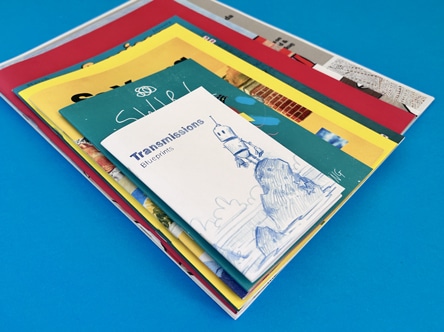
Q: What is booklet binding?
A: Booklet binding refers to the process of securing the pages of a booklet together. It can be done through methods like stapling, stitching, or using wire or wiro binding.
Q: What is the difference between saddle-stitched and staple-bound booklets?
A: They are the same thing, it is just slightly different print terminology.
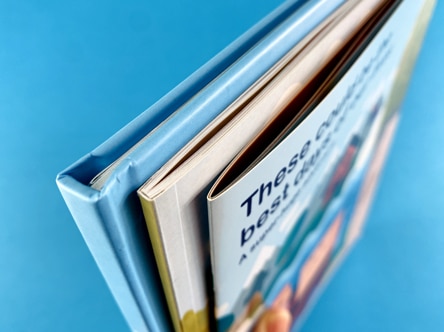
Q: What are the available binding types for booklets?
A: We offer various binding types for booklets, including staple-bound, saddle-stitched, perfect bound or even nested and not bound. You can choose the binding type based on your preferences and requirements. We offer hardback binding too but this is more substantial than a simple booklet.


